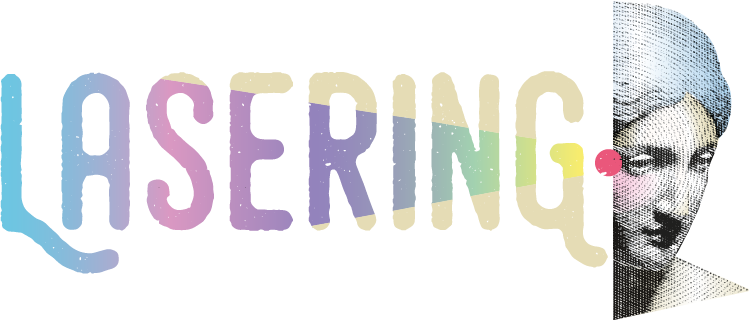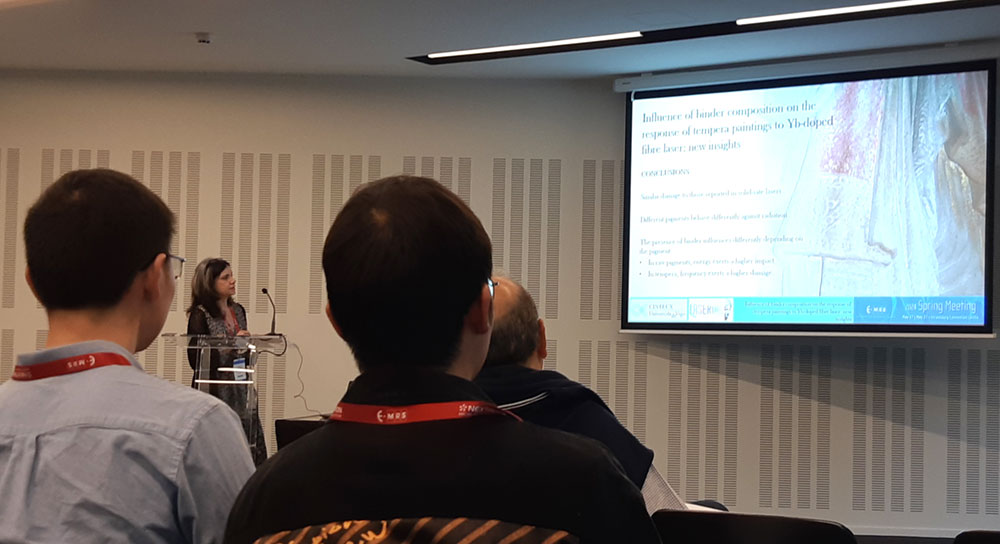Teresa Rivas participated in the Spring Meeting of the European Materials Research Society (E-MRS) held on 27th – 31st May, 2024. This congress is organized with the Foundation Jean-Marie Lehn and at the Convention & Exhibition Centre in Strasbourg (France).
She presented a conference entitled “Influence of binder composition on the response of tempera paintings to Yb-doped fibre laser: new insights” and it was selected as an invited presentation.
During those days, conferences with invited speakers, oral and posters presentation and plenary sessions took place to provide and international forum to discussing recent advances in the field of materials science both on fundamental investigations and technological applications.
ABSTRACT
Influence of binder composition on the response of tempera paintings to Yb-doped fibre laser: new insights
D. Jiménez-Desmond 1,*, L. Andrés-Herguedas 1, C. Ricci 2, F. Zenucchini 2, F. Pozzi 2, T. Rivas 1,*, S. Pozo-Antonio 1, C. Cardell 3.
1CINTECX, GESSMin group. Dpt. of Natural Resources and Environmental Engineering, School of Mining and Energy Engineering, University of Vigo, 36310 Vigo, Spain – Vigo (Spain), 2Centro per la Conservazione ed il Restauro dei Beni Culturali “La Venaria Reale”, 10078 Venaria Reale, Turin, Italy – Turin (Italy), 3Dpto. Mineralogía y Petrología Facultad de Ciencias Universidad de Granada – Granada (Spain)
*Corresponding author(s).
Email: danieljose.jimenez@uvigo.gal (D.Jiménez-Desmond)
Email: trivas@uvigo.gal (T.Rivas)
The application of Nd:YAG and Er:YAG laser at infrared wavelengths and various pulse duration (ns and µs domains) to clean wall paintings has increased over the last decades [1,2 and references therein]. During the irradiation, painting layers experiment alterations due to changes on the inorganic pigments and on the organic binders [1,2]. Thus, laser cleaning requires careful selection of the laser parameters, such as frequency, energy per pulse, fluence, etc. to remove dirt while avoiding physical, chemical, and mineralogical changes to the paintings. Recently, a new type of laser equipment (Yb-doped fibre laser) was introduced in the conservation field, showing promising results for graffiti removal on marble [3]. This laser differs from others on the possibility to treat larger areas in a limited range of time: it would therefore be interesting to study its efficacy in mural painting cleanings.
In this work, a NIR Q-switched Yb-doped laser emitting at 1064 nm, with a pulse duration of 30 ns, a constant speed scan of 10 m/s and a rectangle spot shape has been applied to tempera mock-ups made with a pigment (azurite, malachite, cinnabar, orpiment or lead white) mixed with a binder (egg yolk or rabbit glue). Also, binder-pigment interaction was also investigated by irradiating the pigments without binder. A protocol was established to investigate the influence of frequency and energy per pulse on the response of the samples to laser radiation. Colour spectrophotometry, stereomicroscopy, scanning electron microscopy with energy dispersive X-ray spectroscopy (SEM-EDS) and attenuated total reflection–Fourier-transform infrared spectroscopy (ATR-FTIR) were applied to evaluate the laser irradiation effects. Colour (darkening) and textural (fissuring and cracking) changes were the main effects related to laser irradiation. Egg-based tempera turned out to be more susceptible than rabbit glue-based paints with some exceptions: cinnabar suffered melting exclusively in rabbit glue paints. An increase in frequency generally caused higher colorimetric and textural changes than an increase in energy per pulse. FTIR and SEM showed a binder deterioration as frequency or energy per pulse increased.
[1] A. Andreotti, M.P. Colombini, A. Nevin, K. Melessanaki, P. Pouli, C. Fotakis, Multianalytical Study of Laser Pulse Duration Effects in the IR Laser Cleaning of Wall Paintings from the Monumental Cemetery of Pisa, Laser Chemistry (2006) 1–11. [2] M. Oujja, M. Sanz, E. Rebollar, J.F. Marco, C. Domingo, P. Pouli, S. Kogou, C. Fotakis, M. Castillejo, Wavelength and pulse duration effects on laser induced changes on raw pigments used in paintings Spectrochim Acta A Mol Biomol Spectrosc 102 (2013) 7–14. [3] A. Suzuki, C. Riminesi, M. Ricci, S. Vettori, B. Salvadori. Heritage Science 11 (2023)132. Acknowledgements: This research has been funded by the Spanish research projects PID2021-1233950A-100, ED431F 2022/07 and RYC2020-028902-I.


